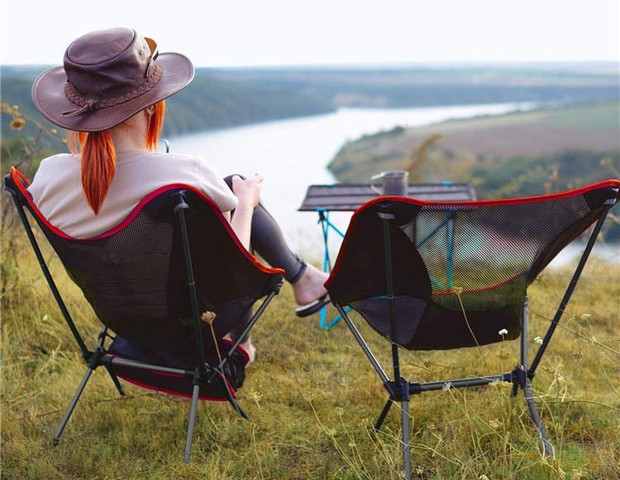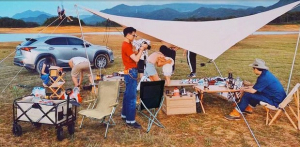News Center+ 查看更多
Innovations in Camping Chair Design for Enhanced Comfort and Adaptability+ 查看更多
Another breakthrough in the design of camping chairs is the integration of adjustable features. These include modifiable armrests, backrests, and seat heights, offering a tailored sitting experience. Such adjustable components are a testament to the industry's commitment to ergonomics, allowing users to modify the chair to their comfort levels, which is especially beneficial during extended outdoor activities. The ability to adjust the chair's features on the fly has revolutionized the user experience, making camping chairs more versatile than ever.

Accommodating different body types also means rethinking the size dimensions of the seat itself. Today's camping chairs boast a wider and deeper seating area, which has been a game-changer for inclusivity. No longer are these chairs limited to a one-size-fits-all approach; rather, they can comfortably seat individuals with varying body proportions, ensuring that every user enjoys optimal comfort and support during their outdoor adventures.
Incorporating ergonomic principles into the design process has led to chairs that support the natural curvature of the spine, reducing the discomfort associated with prolonged sitting. This focus on ergonomics has not only enhanced user comfort but has also played a crucial role in preventing potential health issues related to poor seating posture. By prioritizing the well-being of users, the industry has set a new standard for camping chair design that is both health-conscious and comfort-oriented.
To prevent the risk of tipping, designers have widened the footprint of camping chairs, ensuring a more stable base. This has been achieved by either expanding the distance between the legs or utilizing broader feet pads. These improvements in stability are particularly important in outdoor settings, where uneven terrain can pose a challenge. With a more stable base, users can relax with peace of mind, knowing that their chair is less likely to topple over in the midst of their outdoor excursions.
The selection of materials for the seating and backrest has also evolved, with a shift towards durable, waterproof, and breathable fabrics like nylon or polyester. This material choice strikes the perfect balance between comfort and longevity, providing a seating solution that can withstand the elements while ensuring user comfort. These advancements in material technology have significantly extended the lifespan of camping chairs, making them a reliable companion for outdoor enthusiasts.
A critical aspect of modern camping chair design is the incorporation of user feedback and extensive field testing. By engaging with actual users during the design phase and rigorously testing prototypes, manufacturers have been able to fine-tune their products to meet real-world demands. This iterative process of design and testing has been instrumental in delivering chairs that truly resonate with the needs and preferences of the outdoor community.
Modularity has emerged as a defining feature of contemporary camping chair design. Offering interchangeable components like seat cushions or backrests empowers users to customize their chairs according to their specific requirements. This level of personalization has not only improved user satisfaction but has also extended the functional life of camping chairs by enabling easy repairs and upgrades.
Despite the need for adaptability to various body types, portability remains a key consideration in the design of camping chairs. An ideal camping chair can be easily folded and stored without taking up excessive space, a design ethos that resonates with the mobile nature of outdoor activities. This balance between adaptability and portability is a testament to the industry's ability to innovate while keeping user convenience at the forefront.

